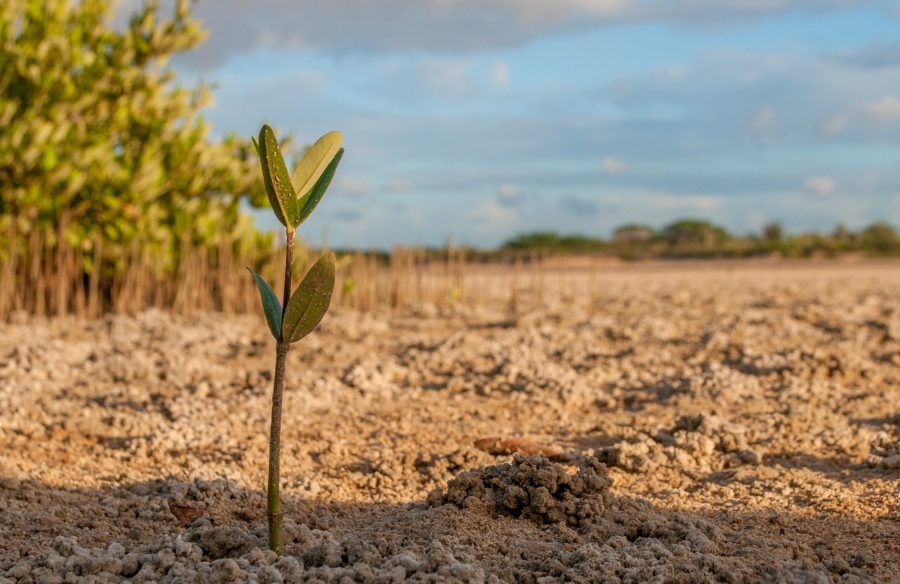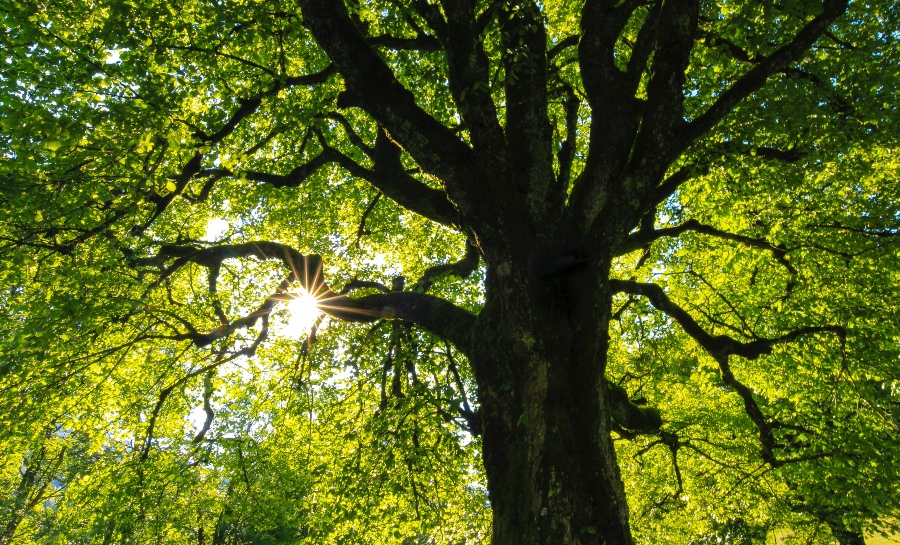Tree Life Stages: Tree Ages Are Relative

The first thing to understand is that tree age doesn’t have as much of a bearing on its difficulty and success when being planted as it’s stage of maturity does. Like dogs, the age span of trees varies from species to species. For trees this can be the difference between a few hundred years and a few thousand years.
There are six stages of tree life:
- Seed/Sprout
- Seedling/Whip
- Semi-Mature Tree
- Mature Tree
- Veteran Tree (& Ancient Tree)
- Dying Tree
Let’s look at each of these in a bit more depth.
Seed/Sprout
A sprout is the germinated seed, with a first root coming out. It is the youngest stage and really only the beginnings of a tree. Many tree planters for properties and commercial projects won’t plant trees at this stage as they will still have a long way to go before becoming visible, and there is still a lot of risk in them not surviving at all. They aren’t recommended for tree planting in most instances.
Seedling/Whip
Whip is a ‘term for single stem young seedling normally 30 to 40cm in height’. Once the shoot of the tree’s seed appears above the ground, it is a seedling or whip. This stage is considered to be the most at risk from diseases and damage – such as from the interference of animals and birds.
Semi-Mature Tree
Semi-mature trees have smoother, more flexible trunks than fully mature trees and have not yet produced fruit or flowers. As these trees are young, but established, they are in a good stage of life for successful planting.
Mature Trees
The core life stage of a tree, maturing is reached once a tree has formed it’s first flowers or fruits. There are huge differences in the mature tree periods for trees depending on species. For some trees it can be 300 years, some will be 3000 years. These trees are more established so planting them is less risky.
Veteran & Ancient Trees
Post flowering and fruiting, these trees are heading into the final stages of life. Moving a tree at the ancient tree stage would be difficult, if not impossible, and replanting is even more risky. These aren’t the kind of trees that are planted.
Ancient is the stage dying and trees are categorised as such when they reach the set age for their species. Trees in the mature and ancient life stages can also be veteran trees. A veteran tree is classed as such when it has a landscape, culture or nature conservation value. With this additional classification, veteran trees can also be hard to remove from a legal standpoint.
Dying Trees
A dead or dying tree is sometimes also known as a snag. At this life stage, you are likely to be removing these trees to make way for new ones. They can still have value to wildlife so they don’t have to be removed, but are on their way out.
Why Plant Trees At Certain Maturity Stages

Which stage of tree life you choose to have planted will largely depend on the effect you are looking for. Do you want a fully mature, leafy canopy for a garden? Or are you looking to line a road or path and allow your tree to come into its full height over time?
As a general rule, the smaller a tree is when it is planted, the more readily it becomes established and begins to grow.’ A sapling will have a large root system, compared to its canopy and leaf surface, which can help it to draw in the nutrients needed to flourish more quickly than a mature tree.
Mature trees will have the most immediate visual impact, fully formed as they are. However, when planting mature trees, there is a higher risk of damage or stress during the process of moving and planting. The more established a tree is, the more unhappy it will be about being moved. Because of this, and the expertise needed to plant mature trees, they can also be more expensive to have planted than saplings or whips.
Best Time Of Year To Plant Trees

The best time of year to plant trees in the UK is between October and April. This is only a guideline, and will depend on other factors, like the weather.
The weather is fickle, especially with global warming, and this can affect the quality, wetness and health of soil. The most important thing to remember when planting trees is that you want to have the right environment to give your trees the best chance of successfully acclimating to their new homes.
When planning tree planting you want to make sure of two things:
- Avoid waterlogged soil – where water is sitting on the soil surface or in pools, newly planted trees can become drowned, though some types of trees will thrive in marshy grounds.
- Avoid frozen soil – where the ground is too hard and cold, trees will struggle to survive once planted.
An expert tree planter will be able to check that soil and the surrounding area where you are planning to plant trees is suitable and that it will work for your chosen species. Getting this expert input will also ensure your tree flourishes once planted.
Even More Goes Into Tree Planting
Tree planting is a many staged service and can include clearing dead trees, reinvigorating soil and aftercare of trees once they are planted – rather than simply leaving them to fend for themselves. If you have any questions about the process or need advice about choosing which stage of maturity tree to plant, you can contact our team who will be happy to offer advice.
